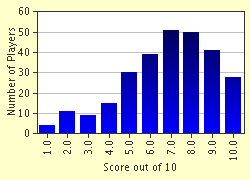Quiz Answer Key and Fun Facts
1. Which of these is the most recent symbol of Brussels ?
2. There is no doubt that the geographical, historical and commercial heart of Brussels is the Grand'Place. The houses constitute a harmonious entity and most of them have statuettes symbolising their names such as the Fox, the Horn, the She-Wolf,the Wheelbarrow, the Swan, etc. One of them, the Pigeon at nr.26 was, in 1852, the residence of an important French writer in exile. Who was he?
3. The area around the Grand'Place is the ideal spot to find such local goodies as lace,beer and Belgian chocolates. One type of beer is typically linked to Brussels because, for its fermentation an enzyme is required that is only found in the atmosphere of the local Zenne-valley. What's the name of that local beer?
4. Which of these areas has been called the 'belly of Brussels' because of its multitude of little restaurants and the massive response of the hordes of tourists?
5. Fortunately Brussels is not all about food, beer and lace as the tourist industry seems to suggest. There are various interesting museums. One of the most recent is in what was once the Old England Department Store: the Museum of Musical Instruments. Belgium not only played a role in the history of music via musicians such as Eugene Isaye, Arthur Grumiaux, the International Queen Elisabeth competition; there even was a Belgian who invented one of the more important music instruments. Which one?
6. Also in other arts there was some Belgian contribution. There are the surrealist painters Paul Delvaux and Rene Magritte. But also some important architects of the Art Nouveau Movement. Which of these names refers to the best-known of them, whose own house in Rue Americaine at Ixelles has now become a museum ?
7. Brussels has two excellent Art Museums, the Ancient Art Museum in Rue de la Regence and the new subterranean Modern Art Museum at Place de la Regence. When W.H. Auden visited Brussels the museums were still housed in ONE museum the Musee des Beaux Arts. Auden was especially struck by works such as 'The Fall of Icarus' and 'The Census at Betlehem'. He liked the sideways view of the painter who always seemed to focus on the unimportant circumstances rather than on the topic as suggested by the title. Who was that slightly ironic painter?
8. The art of the comic strip - the Ninth Art ? - has always been very popular in Belgium. It even got its own museum in an old Art Nouveau building by Horta, the Waucquez House in Rue des Sables. It pays a lot of attention to the creator of the popular comic character Tin Tin, and such side-characters as Captain Haddock, the Thompsons and Professor Calculus. Who was that creator?
9. What typical product of Belgium is represented by all of these famous manufacturers, whose shops are omnipresent in the Brussels tourists' areas : Neuhaus; Godiva; Wittamer; Leonidas?
10. To end on a cultural note, one of these British women authors studied for some time at the former Pensionnat Heger ( at the site of the present-day Palais des Beaux Arts). Later she became a teacher. She fell in love with Mr. Heger himself, but as there was no future for such a love she returned home and expressed her feelings in a novel called 'The Professor'. Who was she?
Source: Author
flem-ish
This quiz was reviewed by FunTrivia editor
spanishliz before going online.
Any errors found in FunTrivia content are routinely corrected through our feedback system.

